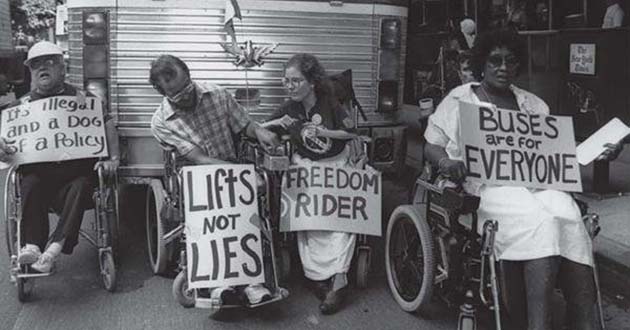The History of Disability - Lecture Review and Thoughts
This blog post evaluates my reflection of Dr. Kiesling’s lecture that focused on the history of disabilities in society. The lecture emphasized the maltreatment of disabled individuals at the beginning of the 20th Century and the turn of society’s view of disabled individuals through the 20th Century. Three points resonated with me from the lecture; it provided a deeper understanding of why education, advocacy, and perception is important to support disabled individuals in society.
Educating the community of the history of disabled individuals is important to measure the amount of progress we have made in the past. Understanding how far we have come will help us assess how far we still have to go. Education also allows the community to bring disabled individuals to the forefront. Dr. Kiesling noted that children with disabilities are often segregated from the general classroom in grade school. I soon realized that we tend to overlook disabled individuals in society to avoid awkward conversations and inclusion, however, it is important to include them into society as much as possible to encourage diversity and autonomy. Educating the community could promote job and social opportunities for disabled individuals, providing their life with more meaning, excitement, and a sense of belonging to society.
Educating the community is also important to promote advocacy. Advocacy can increase awareness, accessibility, and inclusion for the disabled. Curb cuts may not be important for those with functioning legs, but they are very important for wheelchair accessibility. Now imagine how many disabilities exist that still require accommodations that are not yet met in society. This is why advocacy and inclusion should be practiced to progress towards these accommodations. This means we should actively work alongside disabled individuals so that they can help us understand their needs for an inclusive society.
Understanding the needs of disabled people and how they perceive themselves can help us connect with them on their terms of how they identify. We have to evaluate how disabled people view themselves? Is autonomy important to them? Do they perceive themselves as disabled? A person who is disabled may be able to complete the same tasks the general public can complete. So, what if they don’t view themselves as disabled? Do we interact based on how they identify? Those questions are complex because there is no one answer. However, the goal is to understand how they perceive themselves and to evaluate our preconceived notions on how we should interact with a disabled person. Not every person is the same, so every interaction is going to be on a case by case bases.
Education, advocacy, and perception weigh heavily on the progress we make towards inclusion. We can make tremendous progress if we focus on these categories as individuals and advocate for disabled people as a society. This will allow us to strengthen the community and better understand the personality that is sometimes masked by the disability. When we understand that there are brilliant personalities behind the mask, we can use those personalities to improve our own.


Terrific post, Ted. Thank you for sharing your perspective on this important topic.
ReplyDelete